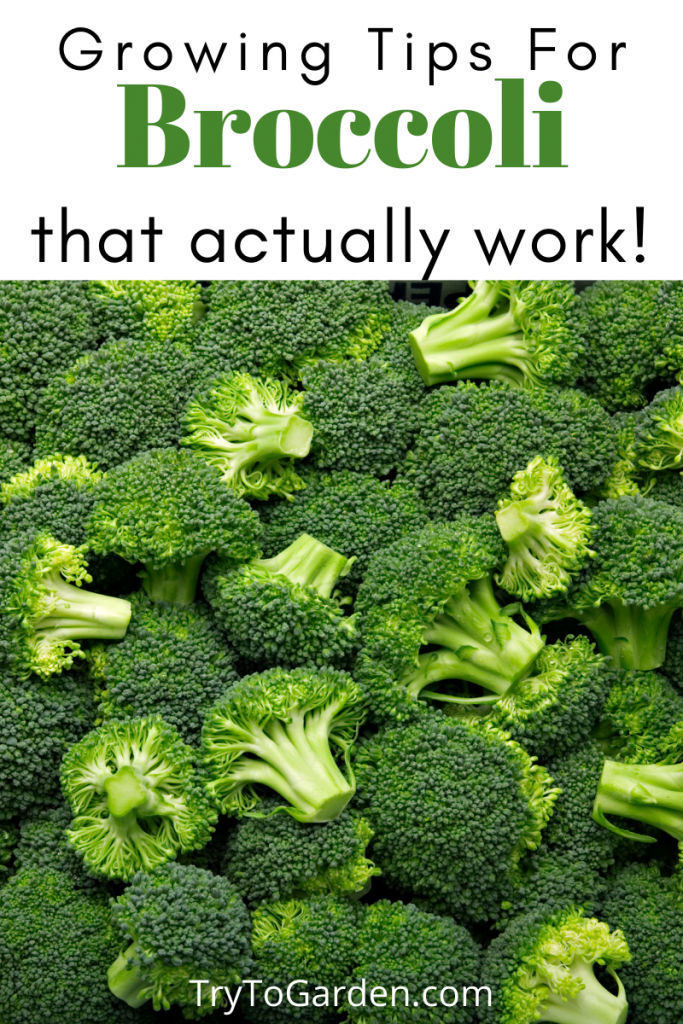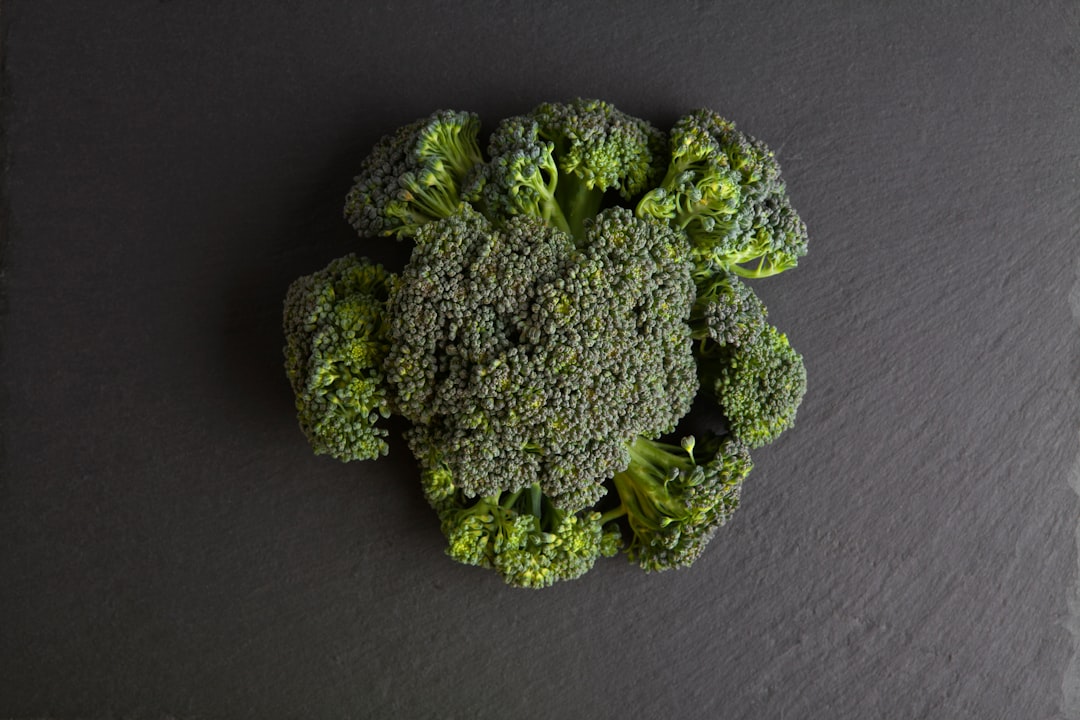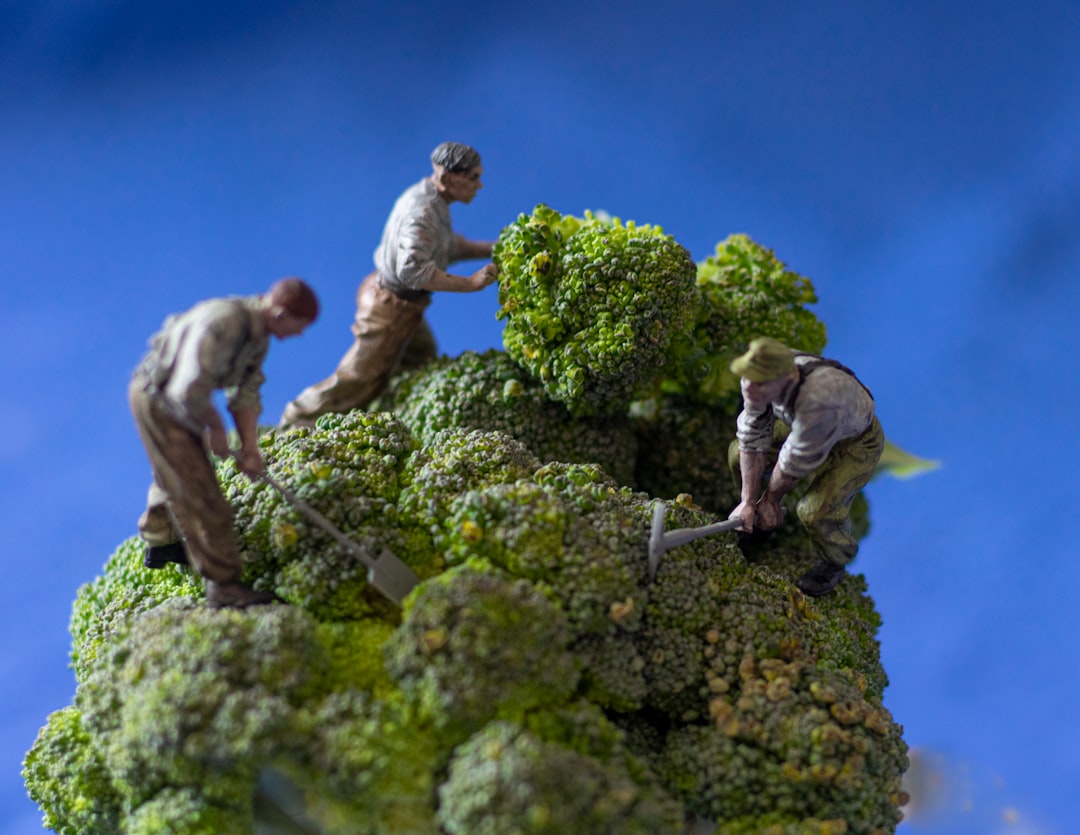This post contains affiliate links, which means I will make a commission at no extra cost to you should you click through and make a purchase. As an Amazon Associate I earn from qualifying purchases.
Broccoli is now regarded as one of the so-called “superfoods” packed with vitamins and minerals that are essential as part of a healthy diet. Although it is sometimes considered to be a bland and rather tasteless vegetable and is unpopular with a lot of children, for this reason, it remains a popular crop for vegetable gardeners.

It can be spiced up at the table by adding white or cheese sauce or cooking in a tasty stir-fry. The most important rule where it comes to cooking broccoli is never to overcook it, or the nutritional value will be lost.
Gardening Tips for Broccoli That Actually Work!
Growing broccoli, whether in the ground or large containers in a kitchen garden, is a simple and rewarding process, even for novices to vegetable gardening.
History of broccoli
Broccoli is a member of the cabbage family and was originally developed as a cross between broccoli raab, an Italian vegetable dish also called rapini, and wild mustard.
It's believed that it originated in Italy before 200 BC where its name came from: "brocco" meaning sprout or shoot.
The first mention of broccoli in the United States was in 1806 when Thomas Jefferson planted broccoli at Monticello.
Benefits of broccoli
Broccoli is a good source of fiber and protein and contains iron, potassium, calcium, selenium, and magnesium as well as the vitamins A, C, E, K, and a good array of B vitamins including folic acid. Discover more about why we need fiber, vitamins, and minerals.
Basic Broccoli Facts
Broccoli germination takes 10 to 14 days
Broccoli is a cool-season crop, so it should be started in late winter or early spring (depending on your climate) for an early summer crop, or in mid-to-late summer for a fall crop.
Broccoli does best when temperatures remain between 40 degrees and 70 degrees F. It needs to mature during cool periods, so it does well in most areas if planted in late summer to mature in fall.
If you have a family of broccoli eaters, plan on planting 2-4 plants per person. Broccoli plants can be harvested two to three times for a period of up to three months. The plant first produces a large head in the center of the plant. Once this main head has been harvested, it will grow several smaller side heads for the next several weeks.
Eat it raw, with a dip or in a salad, to get the most nutrients out of it. Roast, steam, or pan-fry it for a healthy and tasty side dish or snack, or add it into recipes like pasta, stir fry, and soup.
Gardening tips for Broccoli: soil
A week before sowing the seeds, it’s a good idea to rake in a good amount of fertilizer such as pelleted chicken manure, which will help the seedlings to grow in the early stages. The seeds should be sown 1cm (½ inch deep, and rows should be approximately 15cm (6 inches) apart. Once sown, the seeds should be covered with some fine soil and watered well. Slug pellets should be sprinkled along the rows, although it is important to make sure a safe variety of pellet is used, mainly where children and animals are present. Wire mesh will help to deter birds from pecking at the young seedlings.

Planting
Broccoli seeds can either be sown directly into the soil or sown in cell trays and should be sown between the beginning of March and the end of May.
To produce plug-plants for planting out from May onwards, seeds should be sown 6mm deep in a good quality multi-purpose or seeding compost, with one seed per cell of the cell tray. The seeds should be covered with compost and given a good watering before covering the cell tray with a propagator lid. Heat isn’t necessary for the seeds to grow, but humidity is important. The seeds should have germinated within one to two weeks.
When sowing seeds straight into the soil, it is essential to prepare the soil beforehand. The ideal spot for growing broccoli is in a sunny area of the garden that has been previously manured. Short rows of seeds should be sown across the chosen area; these rows are known as nursery rows because as soon as the seedlings are large enough, about 10-15cm (4-6 inches) tall, they will need to be transplanted.
When seeds sown in cell trays have grown into what is known as plug-plants, they can be planted out into prepared soil from the beginning of May onwards. The soil must be allowed to settle after preparation because if young broccoli plants are planted into loose soil, they tend to produce poor quality crops. One quick way of firming up loose soil is to place a board of wood across the soil and walk across it several times to compress the soil.
Plant the young plants 65-75cm (26-30 inches) apart, and bury any stretched stems as part of the planting process. Make sure to firm the soil around the roots well with the fingers to ensure the best crop. As with seeds sown directly into the ground, precautions should be taken against slugs and birds.
Gardening tips for broccoli: Plant care
Broccoli must be watered well in dry spells to maintain growth, and it is also a good idea to apply a mulch of rotted organic matter to aid in growth and crop quality. However, organic matter containing nitrogen, such as grass cuttings, should be avoided as this will cause the plants to produce too much leaf.
Because broccoli is likely to become top-heavy, it is advisable to stake each plant with a sturdy cane to prevent stems from breaking. It is also a good idea to build the earth up around the base of the plant to avoid damage to the root caused by the rocking motion of the wind.
One of the biggest problems with growing broccoli is the tendency of the plant to attract cabbage white butterflies, which will lay eggs on the leaves, creating an influx of caterpillars that will gorge on the greens. Nylon netting is the best deterrent for these pests.
Harvesting broccoli

Broccoli can be harvested when the heads are between 10 and 17cm (4-7 inches) wide. The head should be firm and tight. A sharp knife should be used to cut the head from the plant. The joy of broccoli is that the side shoots can be continued to be harvested later.
Enjoying broccoli
Broccoli is one of those vegetables that can be enjoyed raw or cooked. One thing to keep in mind when cooking broccoli, though, is never overcook it! The best way to cook your broccoli is by steaming the florets until they are just tender crisp and then adding a little butter for flavor. When you steam the vegetable, it brings out the broccoli's natural sweetness.
Easy Broccoli Recipe
The flavor and fiber of broccoli add well to a variety of kinds of recipes - everything from salads and soups to casseroles. Here are a few recipes we love: Broccoli Crunch Salad Screams Summer , Instant Pot Chicken Broccoli and Rice Bake , Sheet Pan Pineapple Spiced Chicken , Oriental Pork Recipe, and Meal Planning with California Blend Casserole.
